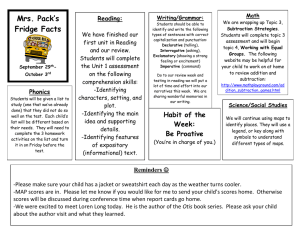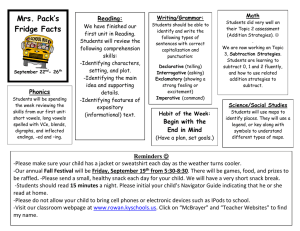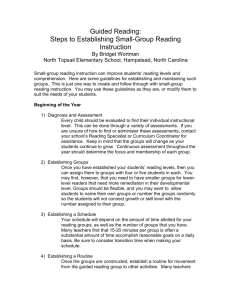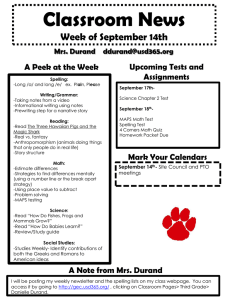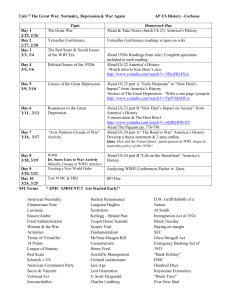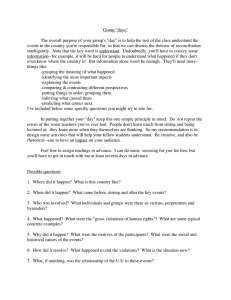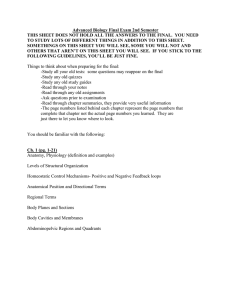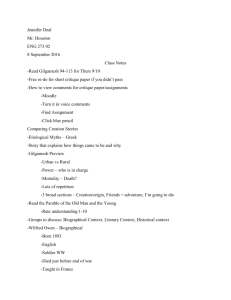Tips on Reading Academic Material Andy Hira Updated: 2011
advertisement
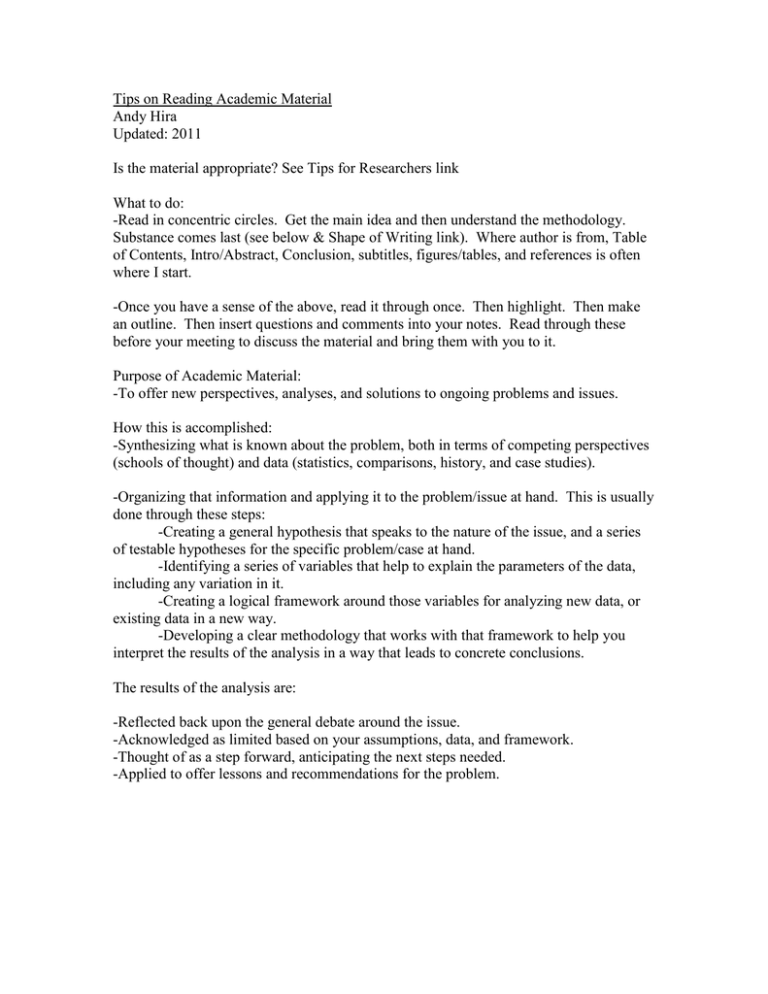
Tips on Reading Academic Material Andy Hira Updated: 2011 Is the material appropriate? See Tips for Researchers link What to do: -Read in concentric circles. Get the main idea and then understand the methodology. Substance comes last (see below & Shape of Writing link). Where author is from, Table of Contents, Intro/Abstract, Conclusion, subtitles, figures/tables, and references is often where I start. -Once you have a sense of the above, read it through once. Then highlight. Then make an outline. Then insert questions and comments into your notes. Read through these before your meeting to discuss the material and bring them with you to it. Purpose of Academic Material: -To offer new perspectives, analyses, and solutions to ongoing problems and issues. How this is accomplished: -Synthesizing what is known about the problem, both in terms of competing perspectives (schools of thought) and data (statistics, comparisons, history, and case studies). -Organizing that information and applying it to the problem/issue at hand. This is usually done through these steps: -Creating a general hypothesis that speaks to the nature of the issue, and a series of testable hypotheses for the specific problem/case at hand. -Identifying a series of variables that help to explain the parameters of the data, including any variation in it. -Creating a logical framework around those variables for analyzing new data, or existing data in a new way. -Developing a clear methodology that works with that framework to help you interpret the results of the analysis in a way that leads to concrete conclusions. The results of the analysis are: -Reflected back upon the general debate around the issue. -Acknowledged as limited based on your assumptions, data, and framework. -Thought of as a step forward, anticipating the next steps needed. -Applied to offer lessons and recommendations for the problem.
